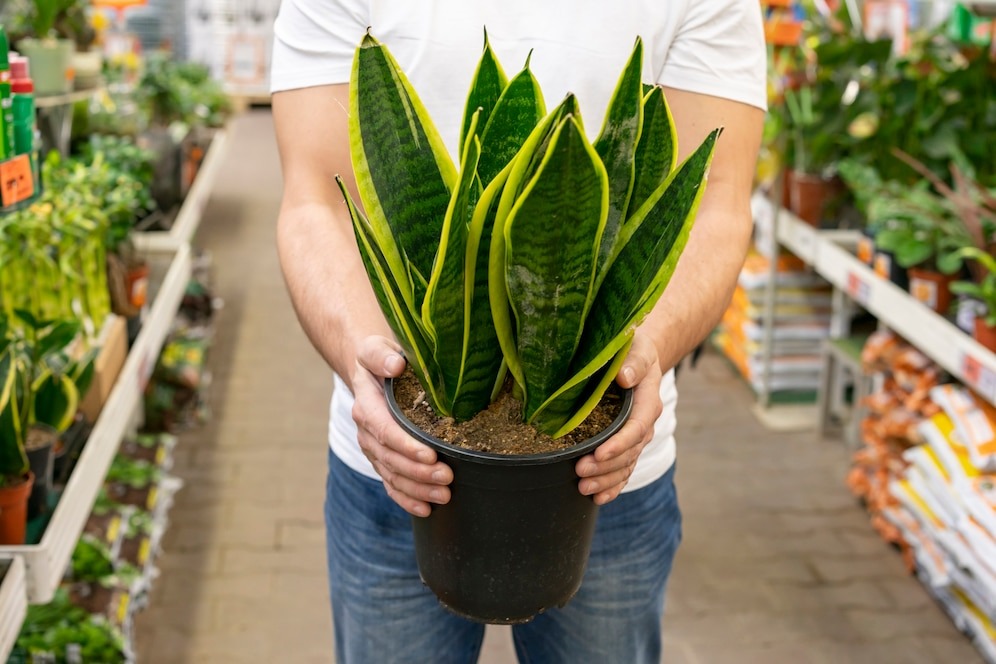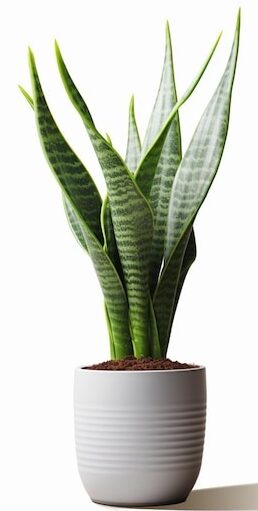Snake plants (Sansevieria) are popular houseplants known for their hardy nature and striking appearance.
These low-maintenance beauties are not only visually appealing but also offer a range of benefits, from improving indoor air quality to adding a touch of greenery to your living space.
However, like all plants, snake plants require proper care to thrive. In this guide, we’ll delve into the essential aspects of snake plant care, helping you keep your green companion healthy and vibrant.

Understanding Snake Plants
Before we delve into the care instructions, it’s important to familiarize yourself with snake plants and their characteristics.
1. Overview of Snake Plants
Snake plants, also known as mother-in-law’s tongue or Sansevieria, are native to West Africa and belong to the Asparagaceae family.
They are renowned for their distinctive appearance, featuring tall, upright leaves with a striking combination of green and yellow hues.
These plants are particularly popular as indoor choices due to their adaptability and air-purifying properties.
2. Benefits of Snake Plants
Understanding the benefits of snake plants can motivate you to take better care of them. These benefits include:
- Improved Indoor Air Quality: Snake plants are excellent air purifiers, as they can remove toxins like formaldehyde and benzene from the air, contributing to a healthier living environment.
- Low Maintenance: Snake plants are among the most low-maintenance houseplants, making them ideal for beginners or those with busy lifestyles.
- Aesthetic Appeal: Their striking appearance adds a touch of elegance to any room, making them popular choices for interior decor.
Now that you know the basics, let’s dive into the care instructions.
Snake Plants: The Ultimate Care Cheat Sheet You Need

1. Light Requirements
Proper lighting is crucial for snake plants to thrive.
- Indirect Light: Snake plants prefer indirect sunlight. Place them in a spot where they receive bright, filtered light. Avoid exposing them to direct sunlight, which can scorch their leaves.
- Tolerance for Low Light: Snake plants can tolerate low light conditions, making them suitable for rooms with minimal natural light.
2. Watering
Overwatering is a common mistake with snake plants. Here’s how to get the watering right:
- Allow Soil to Dry: Let the soil dry out completely between waterings. Stick your finger into the soil – if it’s dry up to the first inch, it’s time to water.
- Water Sparingly: Snake plants are drought-tolerant and prefer to be underwatered rather than overwatered. Water sparingly, especially during the winter months.
3. Soil and Potting

Choosing the right soil and pot is essential for snake plant health.
- Well-Draining Soil: Use a well-draining potting mix to prevent waterlogging. A cactus or succulent mix is suitable.
- Appropriate Pot Size: Select a pot that allows for proper drainage and accommodates the size of your snake plant. Avoid pots that are too large, as excess soil can lead to overwatering.
4. Temperature and Humidity
Maintain the right environmental conditions for your snake plant.
- Moderate Temperatures: Snake plants thrive in temperatures between 70-90°F (21-32°C). They can tolerate occasional drops to 50°F (10°C).
- Low Humidity Tolerance: Snake plants are adaptable to low humidity levels, which makes them well-suited for indoor environments.

5. Fertilizing
Proper fertilization helps snake plants grow and remain healthy.
- Minimal Fertilizing: Snake plants do not require frequent fertilization. Feed them with a balanced, diluted liquid fertilizer every 2-3 months during the growing season (spring and summer).
6. Pruning and Maintenance
Regular maintenance ensures your snake plant remains visually appealing and healthy.
- Prune Yellow or Dead Leaves: Trim any yellow or dead leaves near the base to encourage new growth.
- Repot When Necessary: Repot your snake plant every 2-3 years to refresh the soil and provide more room for growth.
Common Issues and Troubleshooting
Even with proper care, snake plants may encounter some problems.
1. Yellowing Leaves
Yellow leaves can be a sign of overwatering. Allow the soil to dry out before watering again and trim any yellow leaves.
2. Root Rot
Root rot can occur if the soil is consistently too wet. Repot your plant in well-draining soil if you suspect root rot.
3. Pests
Common pests include mealybugs and spider mites. Treat infestations with insecticidal soap or neem oil.
Conclusion
Taking care of snake plants is relatively simple, making them an excellent choice for both beginner and experienced plant enthusiasts.
By providing them with the right lighting, watering, and maintenance, you can enjoy the beauty of these plants while reaping the benefits they offer.
So, go ahead and add a snake plant to your indoor garden – you won’t be disappointed by the elegance and ease of care these plants provide.




